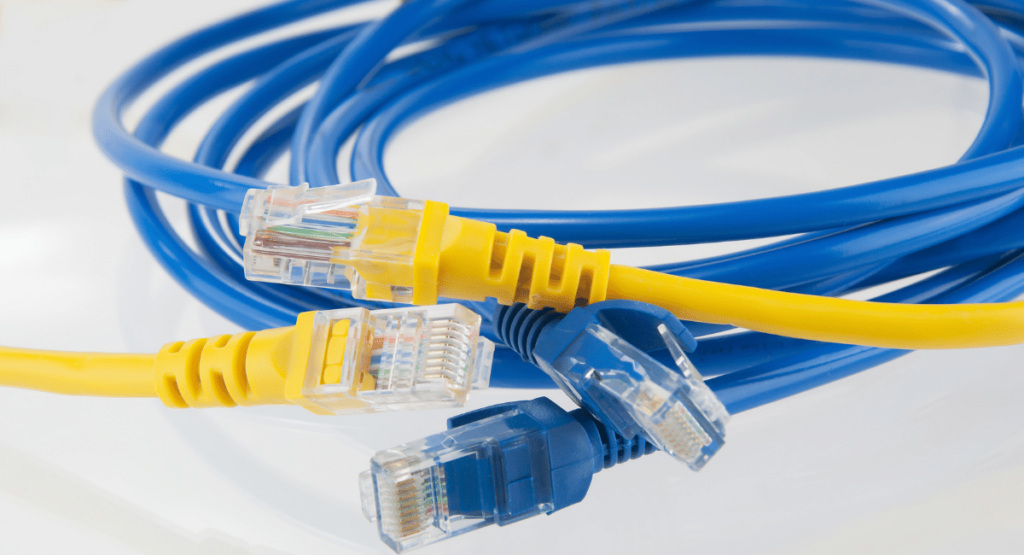All You Have To Know About Ethernet Cable
Ethernet cables are a type of networking cable commonly used to establish wired connections between devices in local area networks (LANs).
An Ethernet cable is a physical cable that connects devices to a local area network (LAN) or the internet. It is a type of network cable that uses twisted-pair copper wires to transmit data.
Ethernet cables are available in a variety of lengths, so you can choose the right length for your needs. They are also available in different categories, so you can choose the right category for your network speed needs.

Ethernet cables are very easy to use. Simply connect one end of the cable to the Ethernet port on your device and the other end to the Ethernet port on your router or switch. Once the cable is connected, you should be able to access the internet or your LAN.
Benefits of Ethernet Cable
Here are some of the benefits of using Ethernet cables:
- Fast speeds: Ethernet cables can provide speeds of up to 10 Gbps, which is much faster than Wi-Fi.
- Reliable: Ethernet cables are very reliable and are less likely to be affected by interference than Wi-Fi.
- Secure: Ethernet cables are more secure than Wi-Fi because they are difficult to tap into.
- Easy to use: Ethernet cables are very easy to use and connect.
- Durable: Ethernet cables are very durable and can withstand wear and tear.
- Twisted Pair Design: Ethernet cables use twisted pairs of copper wires to reduce interference and crosstalk between the wires. The twisting helps maintain signal integrity and allows for more reliable data transmission.
- Power over Ethernet (PoE): Some Ethernet cables support Power over Ethernet, allowing electrical power to be transmitted over the same cable used for data. PoE is often used to power devices like IP cameras, wireless access points, and VoIP phones without the need for separate power cables.
Max Lenght of Ethernet Cable
The maximum length of an Ethernet cable depends on the category and the data speed required. For example, Cat5e and Cat6 cables can support up to 100 meters (328 feet) in length for 1 Gbps data rates.
If you are looking for a fast, reliable, and secure way to connect your devices to a LAN or the internet, then an Ethernet cable is a great option. They are easy to use, support multiple speeds, and are very durable.
Types of Ethernet Cables
Here are some of the most common types of Ethernet cables:
- Category 5e (Cat5e): This is the most common type of Ethernet cable. It supports speeds of up to 1 Gbps.
- Category 6 (Cat6): This type of cable supports speeds of up to 10 Gbps.
- Category 6a (Cat6a): This type of cable supports speeds of up to 10 Gbps over longer distances.
- Category 7 (Cat7): This type of cable supports speeds of up to 100 Gbps.
Conclusion
When selecting an Ethernet cable, consider the required data speeds, the distance between devices, and the category of cable needed to meet your networking requirements. For most standard home and office networks, Cat5e or Cat6 cables are sufficient.
However, if you are on a 10 Gbps network, then you will need a Cat6 or Cat6a cable. If you need a long cable, then you will need to choose a cable that is rated for the length you need.
![What Is HDMI Cable? – [In Brief]](https://radouane.me/hub/wp-content/uploads/2023/07/What-is-HDMI-Cable-768x416.png)
![What Is Fiber Optic Cables? – [In Brief]](https://radouane.me/hub/wp-content/uploads/2023/07/Untitled-design-10-768x416.png)
![What Is Fiber Optic Internet? – [In Brief]](https://radouane.me/hub/wp-content/uploads/2023/07/Fiber-Optics-Internet-768x416.png)

![What Is Fiber Optic HDMI Cable? – [In Brief]](https://radouane.me/hub/wp-content/uploads/2023/07/Fiber-Optic-HDMI-Cable-768x416.png)